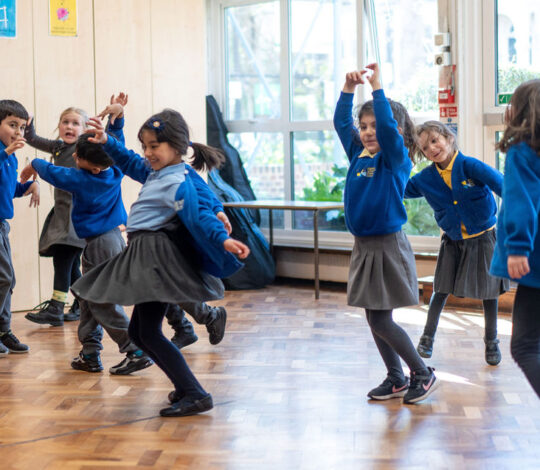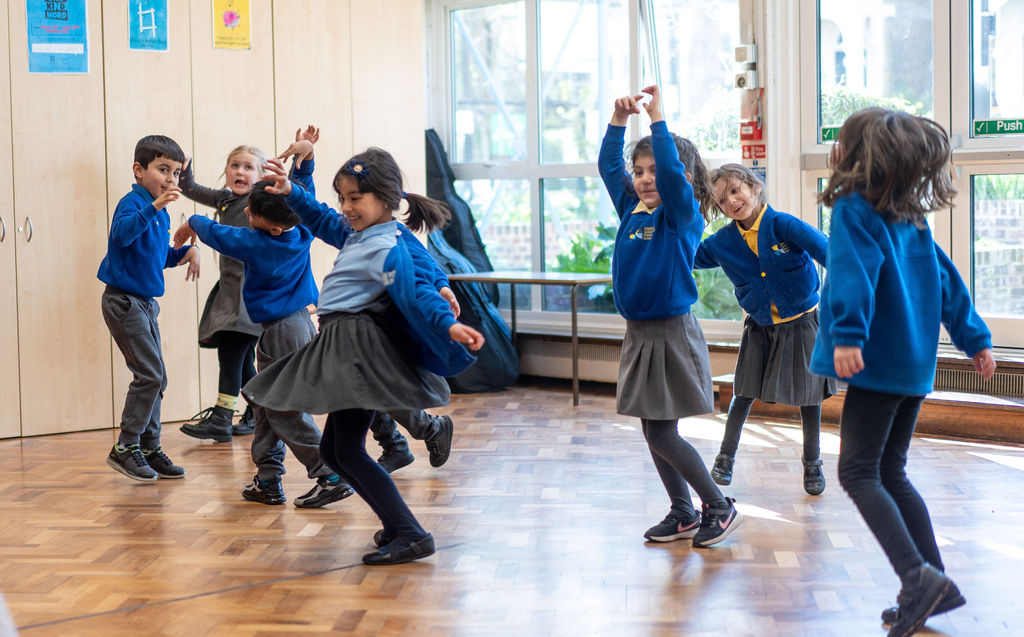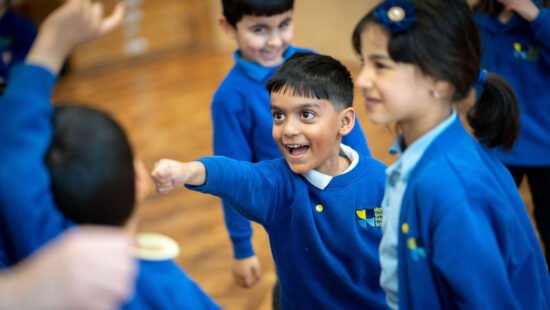How creative learning boosts memory

How creative learning boosts memory
There’s growing evidence that creativity doesn’t just make learning more enjoyable, it actually helps us remember things better. From music and storytelling to art and hands-on experimentation, creative learning techniques strengthen memory in ways that traditional methods often don’t.
How does Artis help?
Artis helps children make deeper connections with their learning by bringing curriculum subjects to life through music, movement and drama. Whether it’s singing about fractions, dancing the solar system or acting out Shakespeare, our sessions get children actively involved—engaging more of the senses and more of the body.
Passive listening only leads to limited retention, yet much of classroom learning still relies on it. Our holistic approach taps into how children learn best—by doing. Music supports rhythm, repetition and recall. Movement builds muscle memory. Drama makes stories and concepts stick. By activating multiple areas of the brain at once, performing arts boost both memory and understanding. Children don’t just remember—they experience what they’re learning.
Here’s how it works and some ways how bringing more creativity to your school day can help your children learn and retain information.
What does the research say?
- Andrade, Carvalho & Galdo (2022): Creative learning tasks increased long-term memory retention by up to 40% compared to passive learning.
- Fiorella & Mayer (2021): Generative learning strategies improved retention by 30-40% over simple review methods.
- Lee, Hwang & Chen (2020): Multimodal learning boosted memory retention by as much as 50% compared to unimodal approaches.
- OECD (2023): Students with access to arts education scored on average 15% higher in reading, maths, and science.
- Seitz & Angel (2021): Multisensory learning creates more vivid and durable memories, improving recall by up to 35%.
- Tyng et al. (2022): Emotional engagement during creative tasks enhanced recall performance by 35% compared to neutral learning conditions.

Engagement matters
When learners are actively engaged, they’re far more likely to retain information. Creative learning taps into this by making education more interactive and meaningful. Whether it’s composing a song to remember scientific facts, illustrating a historical event, or building a model to demonstrate a concept, creative tasks demand attention.
This deeper focus activates the brain’s encoding process – the first crucial step in memory formation. When we’re bored or passive, our brains simply don’t take in information as effectively. But when we’re curious or entertained, we tune in, and that’s when memory sticks.
Multiple senses and pathways
Creative learning often brings in more than one sense. A traditional classroom might rely heavily on written or spoken information, but creative learning goes further. It encourages learners to see, hear, touch, and even move while processing new material.
For example, a child learning a poem might read it (visual), hear it read aloud (auditory), act it out (kinaesthetic), and even illustrate it (visual-motor). Each sensory input creates a new neural pathway in the brain, which builds stronger, more connected memory networks. The more routes your brain has to access a memory, the more likely you are to recall it accurately.
Emotional connection
One of the most powerful tools for memory is emotion. We tend to remember experiences that made us feel something, whether joy, surprise, sadness, or pride. Creative learning often sparks these emotions.
A drama activity might help students understand the fear and courage of historical figures. Writing a personal poem might unlock feelings about a life event. Even drawing a funny cartoon can create an emotional bond to the material. These feelings help the brain prioritise what’s important and encode memories more deeply.
In simple terms: if it moves you, you’re more likely to remember it.
Active rather than passive
Many traditional teaching methods ask students to absorb information passively – reading listening, memorising. Creative learning flips this approach. It asks learners to take ownership of the material, reshape it in their own way, and make something new from it.
That might mean turning a science lesson into a comic strip or explaining a maths concept through a song. These activities require the learner to understand the content first, then reframe it. This kind of active processing is much more effective than simply reading notes over and over again. It embeds the knowledge in a more flexible and usable way, which leads to better recall and problem-solving later on.
Long-term benefits
Creative learning doesn’t just improve memory in the moment, it has long-term advantages too. Studies in both children and adults show that learners who use creative, exploratory methods tend to retain information for longer periods.
One study published in the Journal of Educational Psychology found that students who used drawing to learn vocabulary remembered nearly twice as many words a week later compared to those who wrote definitions. Another study by the OECD found that students with access to arts-based learning showed better academic results and higher levels of motivation.
These benefits extend beyond the classroom. Creativity builds flexible thinking, resilience, and problem-solving skills. It helps people apply their knowledge in new and unfamiliar contexts, which is crucial for lifelong learning.
In summary
Creative learning doesn’t just make education more enjoyable; it makes it stick. By engaging attention, using multiple senses, sparking emotion, encouraging active participation, and building long-term memory, creativity is a powerful ally in learning.
Whether you’re a parent, teacher, or learner yourself, embracing creativity in how you learn or teach can unlock deeper understanding and better memory. And in a world that demands not just knowledge but adaptability, that’s more important than ever.
If you want to find out about bringing more creativity to your classroom with Artis, get in touch here.

